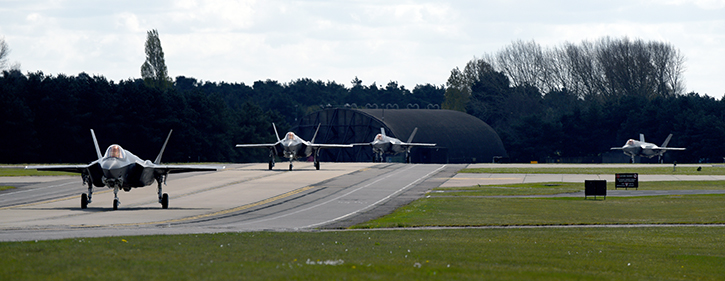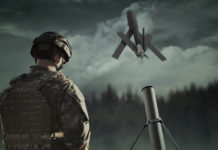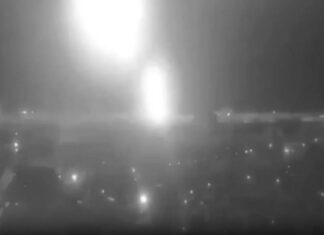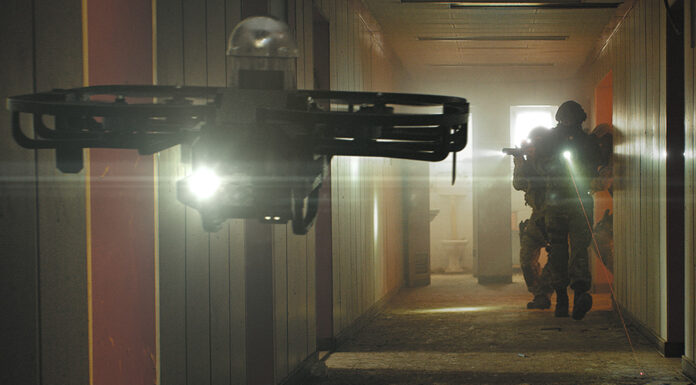The Air Force deployed a small number of F-35A Lightning II joint strike fighter aircraft this weekend on a long-planned training deployment to Europe, Pentagon officials announced today. The aircraft are part of the 34th Fighter Squadron, 388th Fighter Wing, and the Air Force Reserve’s 466th Fighter Squadron, 419th Fighter Wing, both stationed at Hill Air Force Base, Utah. The aircraft are scheduled to conduct training with other U.S. and NATO aircraft based in Europe for several weeks, as part of the European Reassurance Initiative (ERI). Though apparently scheduled months in advance, the deployment was announced as relations between Washington and Moscow have been described as “at an all-time low” by US President Donald Trump.
ERI is a program initiated in 2014 by the President Barack Obama to increase U.S. presence in Europe, in face of the growing Russian threat that followed the invasion of Crimea. Originally the initiative was limited to one year but continued through 2016. Originally the initiative was funded by $1 billion in 2014 that was reduced to $789 million in 2016. The new administration dramatically increased ERI appropriations to $3.4 billion in 2017.
The presence of the Fifth Generation stealth fighters will enable the US Air Force and NATO at large to better penetrate denied airspaces protected by advanced air defense systems and operate against advanced, Russian-operated fighters. Since the F-35A was announced ‘combat ready’ in August 2016 the 34th Fighter Squadron at the Hill Air Force Base in Utah carried out a number of aerial exercises, demonstrating impressive performance in air/air and air/ground missions.

The aircraft destined to Europe will dispatch from Hill Air Force Base, Utah, USA to Royal Air Force Lakenheath Airbase in England. The aircraft arrived today April 15, 2017, marked the aircraft’s first overseas training deployment of the aircraft in Europe. “RAF Lakenheath will be the first overseas beddown location for the F-35A, this deployment allows our pilots and maintainers to learn more about the European operating environment and will improve our interoperability with partners in the region,” said Gen. Tod D. Wolters, U.S. Air Forces in Europe, Air Forces Africa commander.
The transatlantic flight for this training deployment was supported by Air Mobility Command and the 100th Air Refueling Wing, RAF Mildenhall, England. Multiple air refueling aircraft from four different bases offloaded more than 400,000 pounds of fuel during the “tanker bridge” from the United States to Europe. Additionally, C-17 and C-5 aircraft moved airlift support, moving maintenance equipment and personnel.
In a statement announcing the deployment, officials said the F-35A provides unprecedented global precision attack capability against current and emerging threats while complementing the Air Force’s air superiority fleet. “The F-35A is a multi-role precision attack fighter with unmatched lethality, survivability, and interoperability,” the statement said.
The Marine Corps have already deployed the F-35B fighter aircraft to Japan but the US Air Force has limited the deployment of the aircraft to the Continental USA. Among the foreign air forces currently operating the aircraft are Australia, Israel, and Italy. This first deployment of Lightning II aircraft to Europe will enable the Air Force to refine the requirements for eventually basing the F-35A in Europe, which is scheduled to receive the aircraft in the early 2020s.




















